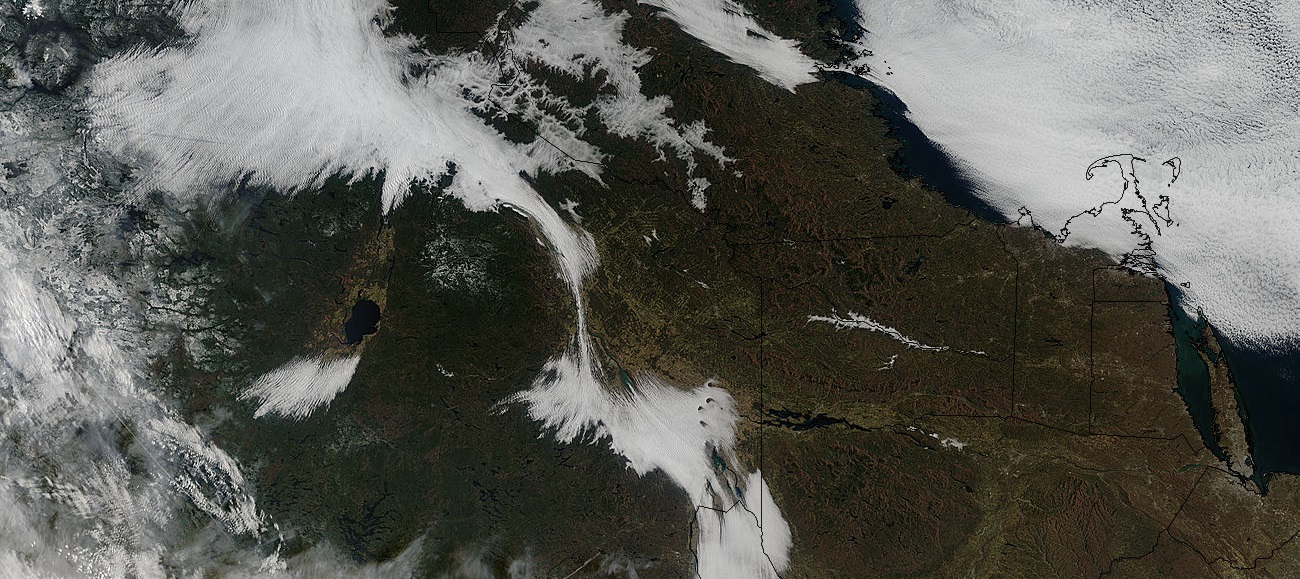UMBC’s Huemmrich uses NASA satellite study climate change

The role of forests in climate change is currently an open question, and it’s one that Fred Huemmrich, research scientist at UMBC’s Joint Center for Earth Systems Technology (JCET) and adjunct faculty in geography and environmental systems, is working to answer. Huemmrich is part of a team that provided proof-of-concept for a new technique to measure photosynthesis in evergreens, using data collected by NASA’s MODIS instruments flying on the Aqua and Terra Earth-observing satellites. The Proceedings of the National Academy of Sciences recently published the results of that work.
At the core of Huemmrich’s research are two conflicting points. Plants remove carbon from the atmosphere during photosynthesis. As the climate warms, longer growing seasons will allow more time for trees to photosynthesize, increasing total carbon uptake and slowing climate change. However, a warmer climate could bring more drought, which stresses trees, reducing photosynthesis and exacerbating climate change.
The biosphere quickly absorbs about 50 percent of the “extra” carbon humans add to the atmosphere. Plants are responsible for the vast majority of that uptake, so it’s important to understand the roles different ecosystems play by measuring their photosynthetic activity. But until now, it’s been impossible to measure how evergreens contribute to carbon uptake on a large scale.
Read the rest at UMBC News: http://news.umbc.edu/umbcs-huemmrich-uses-nasa-satellite-to-measure-effects-of-climate-change-on-evergreen-forests/
Image: Cloud cover over the Eastern U.S. as recorded by MODIS on the TERRA satellite.
Posted: November 29, 2016, 3:44 PM